Pakistani scientist months away from first ever brain-chip trials on humans
Dr Naweed Syed will conduct first-ever human experiments in the middle of this year
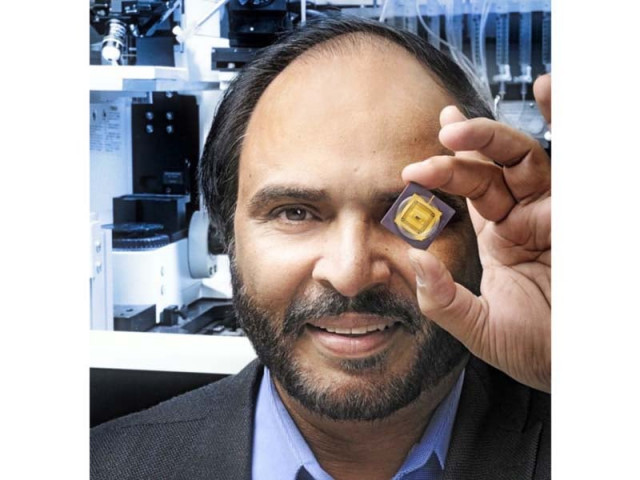
Dr Naweed Syed with his pioneering two way cyborg chip. PHOTO: EXPRESS
That is about to happen very soon – thanks to the efforts of a Pakistani-Canadian scientist.
After two decades of painstaking design, experiments, redesign and observations, a two-way, brain-chip is almost ready for human trials. At first, the bionic chip will be used to manage patients suffering from epilepsy – especially those who do not respond to any drugs present on our shelves.
Dr Naweed Syed, the pioneer of two-way, brain cell activity reading chips will conduct first-ever human experiments in the middle of this year. The ultra-sensitive, hybrid brain chip will be used first as a diagnostic device for epileptic patients through a variety of approaches that have never been employed before.
The abnormal firing of brain signals is the main cause of seizures among epileptic patients. If we stretched our brain at the size of a big hall and step inside, we will see the countless electrical sparks travelling from one place to another and to almost every part of the body. During any movement, the upper part of the brain lights up with activity, while the lower part of the brain fires signals when you are trying to recall any sweet memory. Electric signals that translate into chemical signals - are the prime means of communications that control all bodily functions - managed by 100 billion specialised cells called neurons.
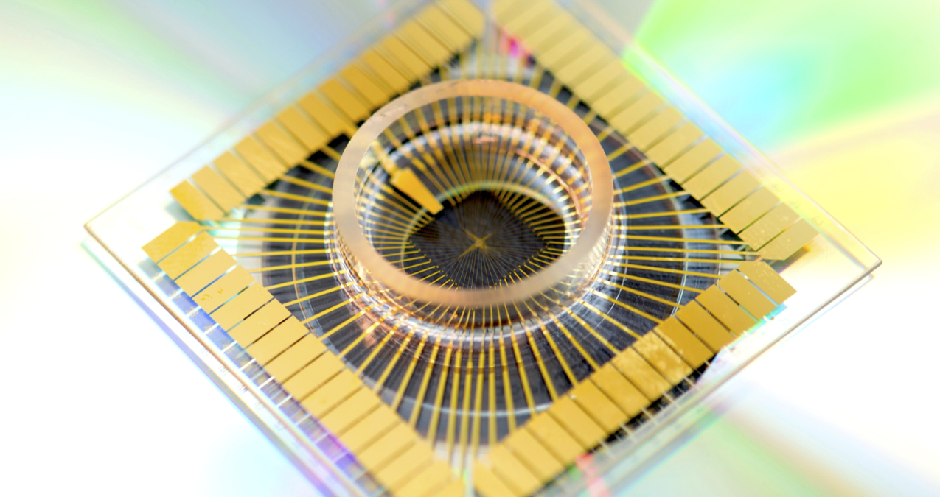 The two way communication bionic chip can talk and listen to brain cells. PHOTO: EXPRESS
The two way communication bionic chip can talk and listen to brain cells. PHOTO: EXPRESSTraditionally, in the case of incurable – or intractable epilepsy, neurosurgeon carefully removes the brain tissue responsible for abnormal signals. However, getting to that specific area is often a guesswork and physical access to those regions also results in damage to, otherwise normal brain tissue. Moreover, the surgical strategy often invokes the removal of otherwise normal brain tissue to avoid any future return of seizure activity. The disease often reemerges – within four to five years – even after invasive, costly and painful surgery.
"The hybrid bionic chip" is one of the three novel chips developed by Syed – aimed at detecting seizures at a resolution never achieved before. Moreover, after its implantation, the chip can detect seizures and convey these signals wirelessly to a wearable pocket backpack – thus relieving the patients of a thirty-foot cable which is otherwise a part of the conventional procedure.
Another important aspect of this chip is that it will be MR compatible– thus allowing the surgeon to pinpoint the precise location of the seizures – thereby facilitating surgical resection. This innovative technology is based on very sensitive electrodes and is soon to be tested on humans at the University of Calgary, Alberta, Canada.
Researchers discover way to treat brain cancer more effectively
"During the human trials, the chip will be able to detect and predict- the epileptic fits in advance and alert the patients to remain calm if she or he is walking or driving. It can also send SMS to emergency services and paramedics – revealing the precise location of the patient through wireless GPS signals while also informing the loved ones.
Syed says that as a next step, the chip will not only detect seizures but also switch to a device that will subdue the seizures by triggering a pulse of negative electrical current which will counter the spread of positive electrical pulses responsible for seizures.
The non-invasive and wireless chip is MR compatible so that the healthcare providers could trace the precise location of seizures in a 3-D model thus pinpointing the exact location of the tissue causing the abnormal signalling in the brain.
Syed's recently developed two "Patch-clamp chips" are another marvel designed to test more than 90 different drugs concurrently - at the single ion channel level. Ion channels are responsible for maintaining all functions of a brain cell and are the target of most drugs used to treat brain ailments – ranging from mental health, depression, psychosis etc. Finally, this technology will make its way for tailor-made treatment of individual patients, while determining the effectiveness and side effects of drugs.
From cyborg snail to bionic chip
Syed is not only the inventor of the first ever brain chip that allowed two-way communications between a brain cell and the electronics but also a visionary of several other brain-machine interfacing technologies. The journey took more than two decades of out of the box approaches that provided evidence that indeed electronics can be interfaced with brain tissue through a bidirectional communication conduit.
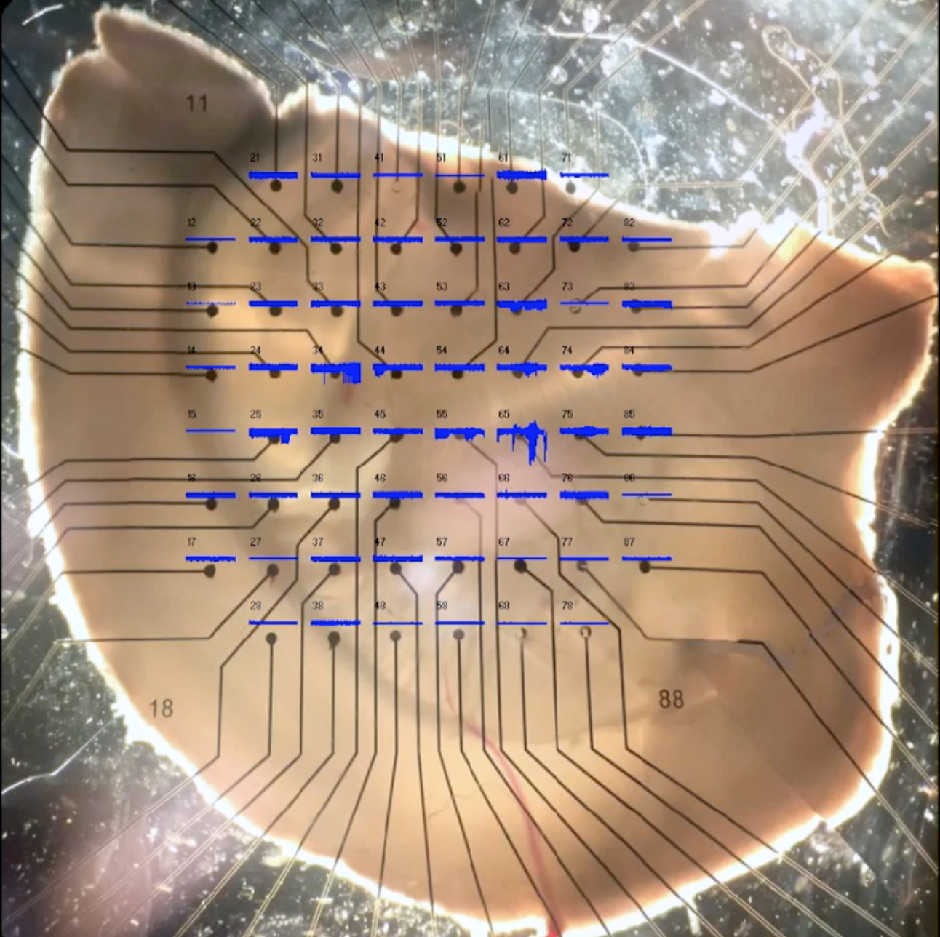 This image shows a slice of human brain cell on a chip. PHOTO: EXPRESS
This image shows a slice of human brain cell on a chip. PHOTO: EXPRESSSyed's group did extensive research, physical examinations, a battery of laboratory and neurophysiology tests on various animal models – including human cadavers (dead bodies).
What most people do not know about Syed's research achievements is that in addition to brain-chip interfacing technology, he has also made several seminal contributions in the field of neuroscience. For instance, Syed lab was the first to reconstruct a breathing circuit in a tissue culture dish which was published in Science – a top tire research journal. The reconstructed circuit generated respiratory patterns in a manner similar to that seen in the intact animals. Similarly, he was also the first to transplant a single brain cell in freely behaving animals, and demonstrated that the transplanted cell not only successfully survived but also restored breathing behaviour in a snail model. Together, these studies were acclaimed as the breakthrough of the "decade of the brain" at the Society for Neuroscience meeting in the USA.
Through other similar studies, Syed came to the realisation that if he were to understand brain function and to repair when it gets damaged, it would be imperative to design chips that could record brain activity at the single cell level and at a resolution never achieved before. The knowledge gained through various simple animal models gave the "perfect recipe" for an organic chip. "Chemical and electrical engineering', coupled with biology is the hallmark of a hybrid chip. It has all the ingredients that brain cells like to grow on and 'feel" as if they are interacting with normal tissue in their host environment. When we place a bunch of neurons on the chip, the cells see it as living part of the nervous system rather than a strange passive piece of metal," adds Naweed Syed.
The biocompatible chip made world headlines in 2004 – from Time Magazine to Discovery Channels - to name a few - as the only technology which enabled a direct and two-way dialogue between the brain cells and the electronics. Tiny capacitor excited the individual brain cells whereas the transistors located underneath the neurons could detect and read the electrical signals like never before. This chip also allowed them to recapitulate traces of learning and memory elicited between the neurons thus giving hope that perhaps memories could also be "planted" in a brain through the chip.
All rights "not" reserved
Dr Naweed Syed's has written more than 130 highly cited research papers published in Nature, Science, Neuron and other prestigious journals and produced several dozen inventions and innovations.
Astonishingly, he only filed a handful of patents and left many without securing his IP. He is a strong believer that a competitive and open source environment is more conducive to innovation and major breakthroughs in the field of science, and that condoning the turf off - deters others from exploring that particular field of research.
MIT researchers control robots using brain signals
"Few people come to a restricted field and I think that filling patents – while a wise thing to do – often hampers others to venture in that field of research. He believes that medicine and medication is for people and patients and that profit comes in the form of service to humanity. Our motive is that if we manage to put a smile on one face, someone could walk because of something that we have given the world the concept of –if one life were to have breathed easily – this is what the mandate of our research ought to be - says Syed.
Honours and laurels
The year 2017 was a memorable in Naweed Syed's career as he was awarded "Tamgha e Imtiaz" by the government of Pakistan and during his stay in Pakistan, he heard that another prestigious award was awaiting him back in Canada. In the same year, he was the recipient of "Senate of Canada 150 Medal", an award created by the Canadian Senate to recognize the country's heroes who made a positive impact in their society. Dr Syed is the only Muslim scientist to have been identified among 150 Canadians or innovations in 150 years of Canada as "Canadians who changed Canada"; one innovation or innovator was selected for each year of the Canadian history.
In addition, Syed has been the recipient of Alfred P. Sloan Fellowship (USA), Parker B. Francis Fellowship (USA), Canadian Institute of Health Research Investigator Award, Alberta Heritage Medical Scientist Award, Peak Scholar, Fellowship of the Royal College of Physicians, UK to name a few. In addition to his research accolades, Syed was awarded Abdus Sattar Ehdi Service Award and University of Calgary's Outstanding Service Award. Syed says that "service is the rent that we pay for the privilege of being a small part of a great circle of humanity.


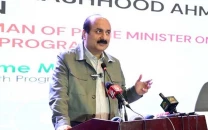
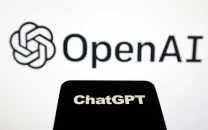
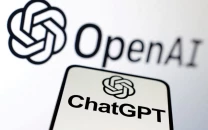
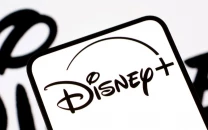













COMMENTS
Comments are moderated and generally will be posted if they are on-topic and not abusive.
For more information, please see our Comments FAQ